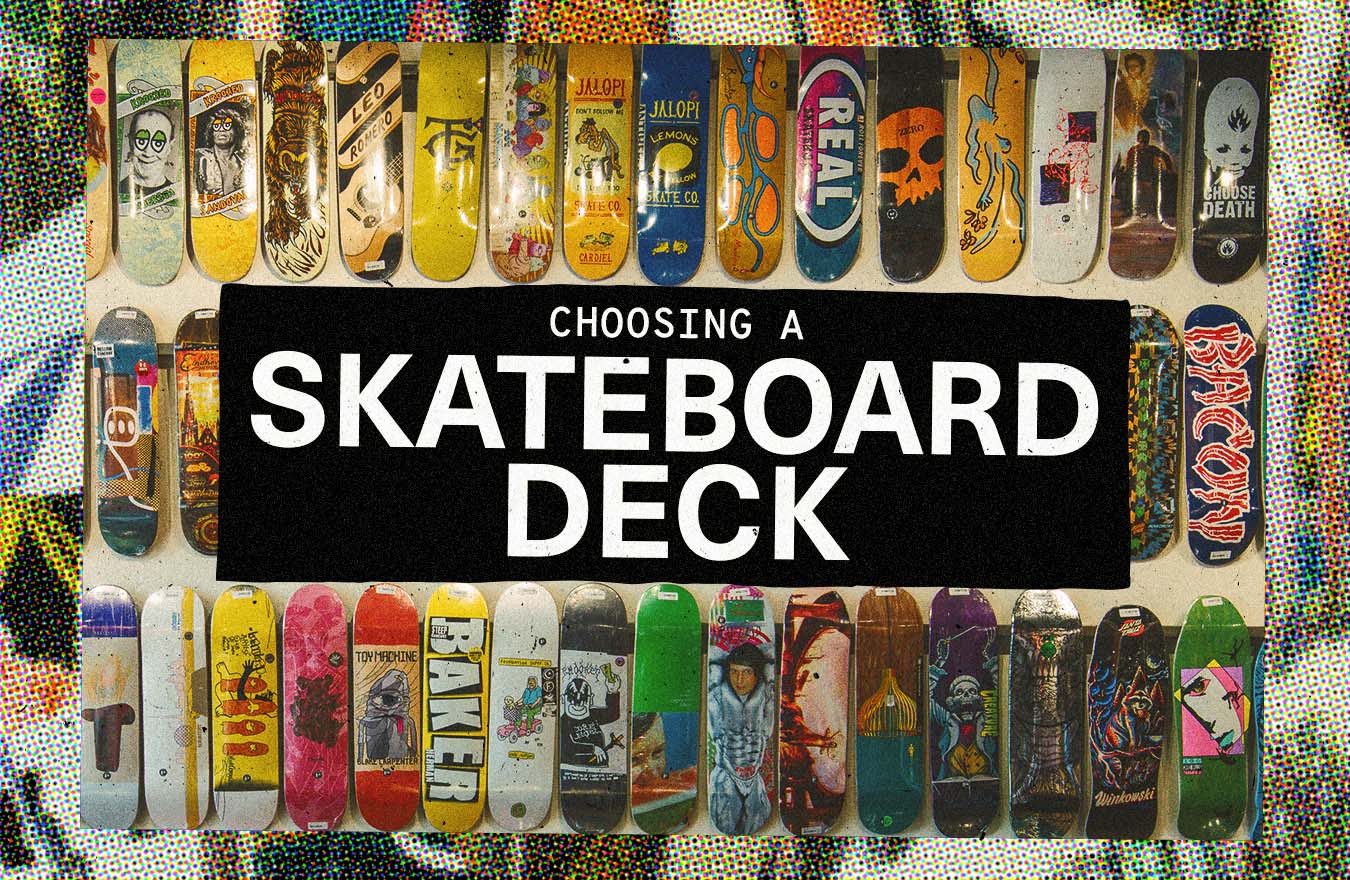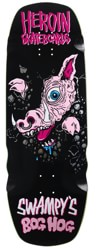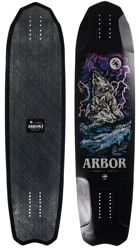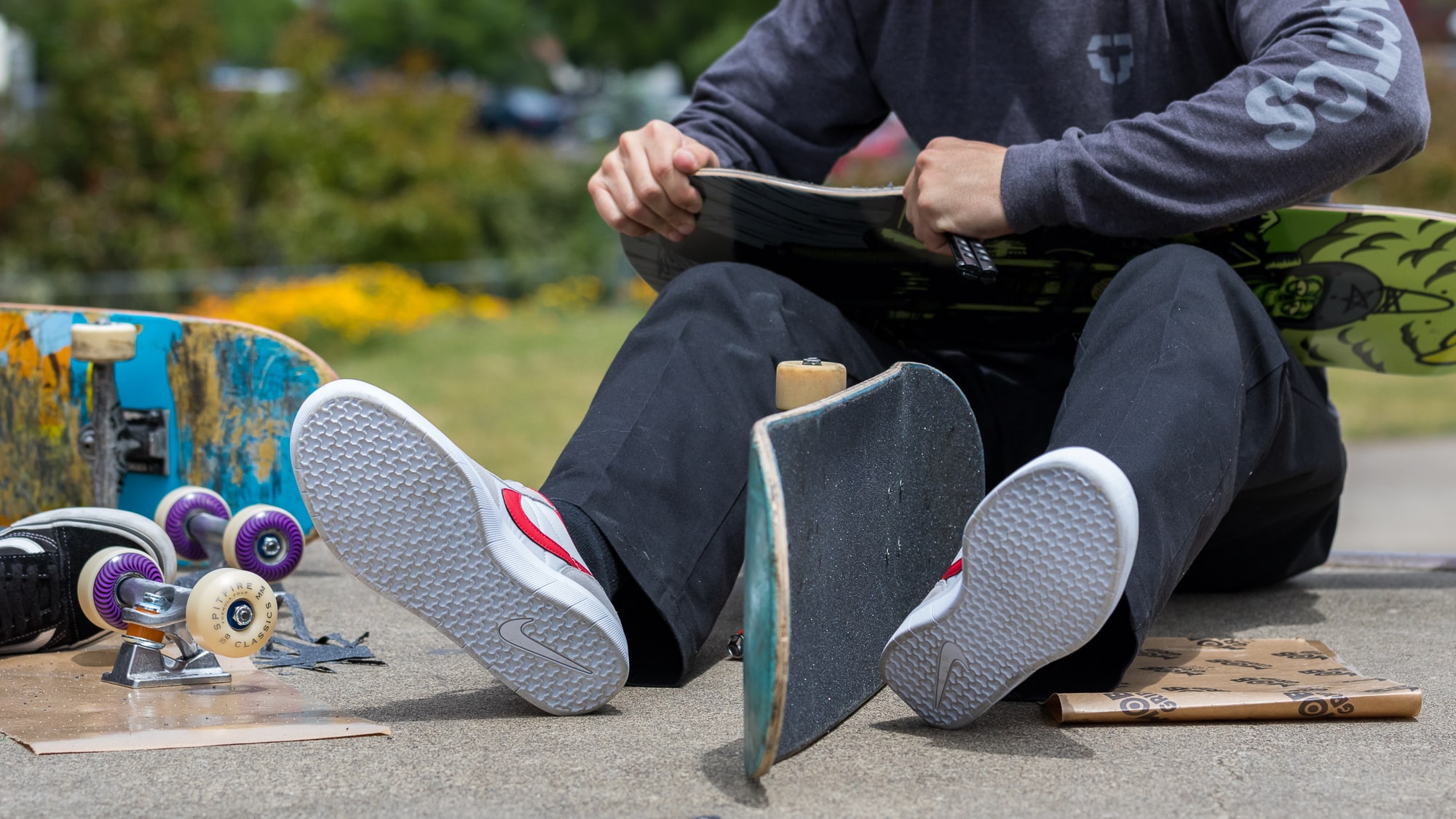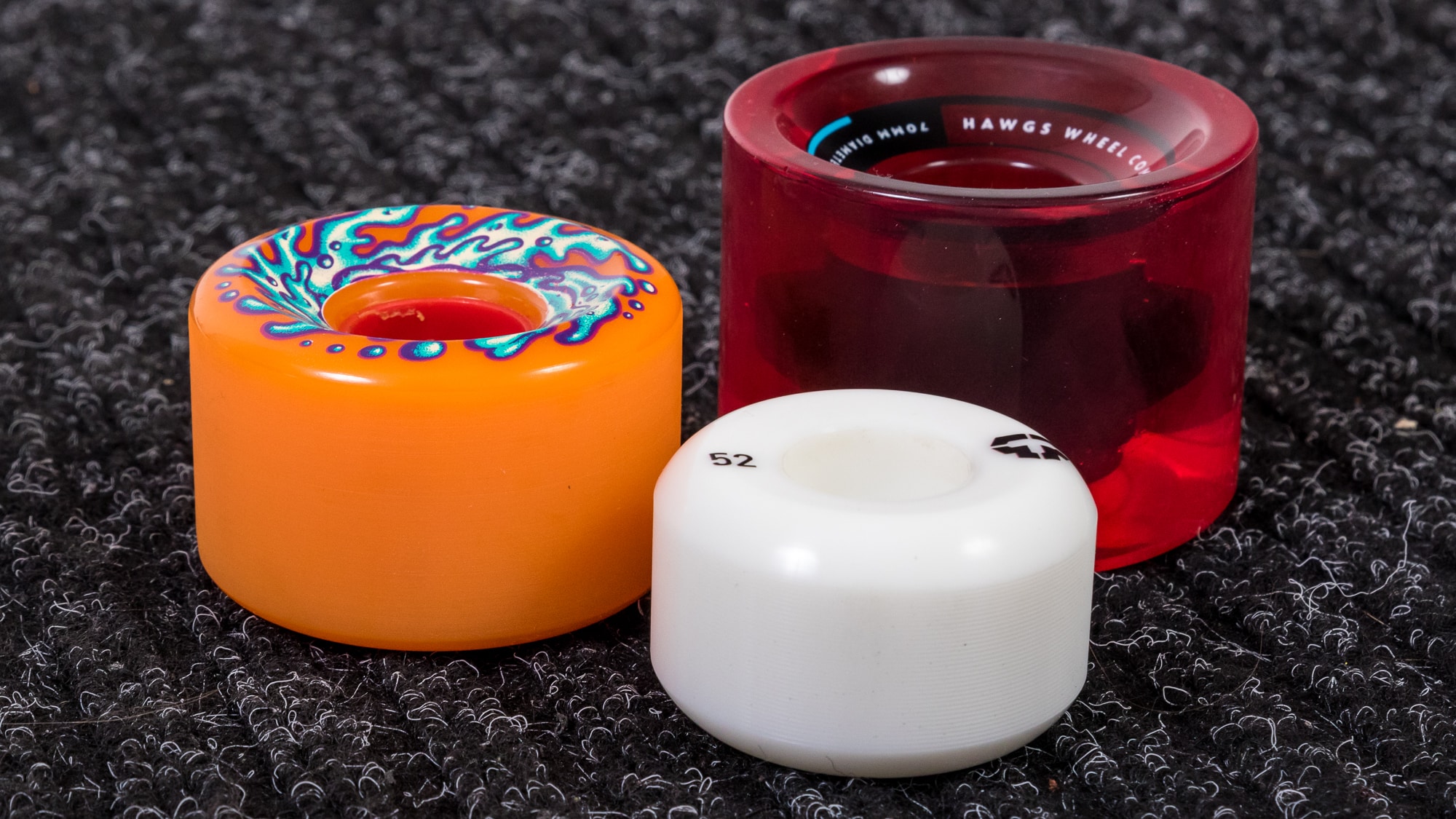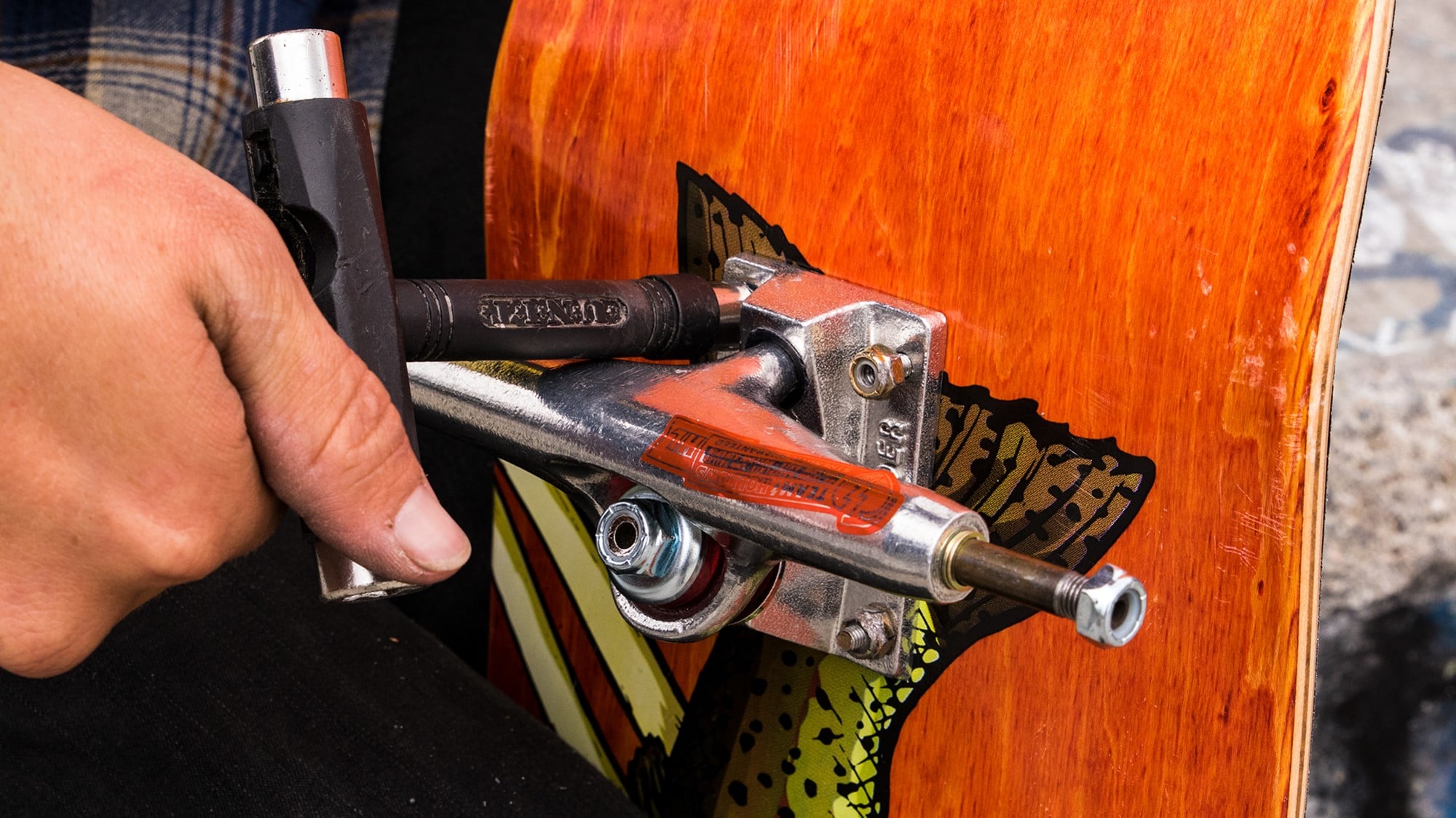Choosing a Skateboard Deck
If you are looking to learn how to choose a skateboard, you have come to the right place. When starting out in the world of skateboarding, it's key to select the right skateboard deck for the type of skating you want to do. The deck is the primary component of the skateboard, serving as the foundation onto which all other parts are attached. Therefore, choosing the right deck is critical as it can significantly affect your overall skating experience.
To make an informed decision, you need to consider the type of skateboarding you plan to do. Skateboard decks come in various shapes, sizes, and materials, each designed for a specific style of skating. For instance, if you're into street skating, you might prefer a smaller deck that's easy to maneuver and flip. On the other hand, if you're more into cruising and carving, a larger and more stable deck might be your best bet. Follow along in our guide below to find out more.
Here’s what we’ll cover:
Types of Skateboard Decks
Skateboard decks are an essential component of the skateboard and come in various shapes and sizes, each designed to cater to different riding styles. In general, there are four main types of skateboard decks available in the market:
- Standard Skate Decks (or Popsicle Shapes)
- Cruiser Boards
- Old School Boards
- Longboard Decks
The type of skateboard deck that is best for you depends on your riding style, level of experience, and personal preferences. It is essential to do your research and carefully consider your options before selecting a skateboard deck to ensure an enjoyable ride. Each one of these boards offers a different degree of performance for different types of skating. We will walk you through everything you need to know about each, and explore a few of the key skateboard constructions along the way.
Click play & check out our lists below to find your new board.
Standard Skate Decks
These skateboards are the ideal choice for beginners and advanced skaters as they are versatile and work well for street skating, skate parks, and almost all styles of skateboarding. These decks are typically ridden with hard wheels and resemble the shape of a popsicle stick with a symmetrical nose and tail.
Cruiser Boards
If transportation is your primary goal, cruiser decks are the recommended choice. These decks are similar in length to standard decks but have a wider variety of shapes available. They are typically ridden with soft wheels, which provide a smoother and faster ride on rough surfaces. Compared to longboards, cruiser decks are lighter and nimbler, allowing for easy maneuvering through the streets and crowded sidewalks of your town.
Old School Decks
Paying homage to the vintage 80s-style skateboards, old school shaped skateboards are wider and have longer wheelbases than standard decks, making them more stable and ideal for bowl skating and transportation. Due to their extra width and short noses, old-school boards are more challenging to flip or ollie, so they may not be suitable for street skating.

Longboard Decks
These boards are the best option for skaters who are looking for a large and stable board that is easy to balance. They are ideal for mellow cruising, pushing long distances, and skating down hills at high speeds. Choosing a longboard deck involves considering factors such as the shape, length, and flexibility of the deck, as well as the type of trucks and wheels to be used.

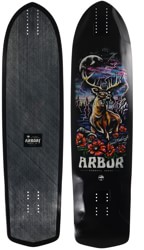
Deck Construction
Traditional 7-ply
This is the most common construction used for skateboarding. It consists of seven thin layers of maple wood veneer, which are pressed and glued together with strong adhesives or resin. This construction process produces a sturdy and reliable skateboard deck that has been the tried and true standard for decades.
The use of maple wood in skateboard decks provides excellent strength and pop, making it a popular choice among skaters. Its natural density and durability help to withstand the stress of riding and landing tricks. Additionally, the seven-ply construction creates a solid foundation for stability, ensuring that the deck won't warp or break easily. The traditional 7-ply skateboard deck is a reliable and durable choice for skateboarders of all levels. It offers a classic feel and performance that has stood the test of time.
Tech Construction
Tech construction skateboards are designed with layers of fiberglass or other materials to improve strength and retain pop. These skateboards are ideal for skaters who prefer to jump down stairs or put a heavy beating on their deck during their sessions.
The additional layers of material used in tech construction skateboards provide added durability, which is especially important for skaters who like to push their limits. This construction process allows the skateboard deck to maintain its pop and shape even after repeated impacts and heavy use. Overall, tech-construction skateboards are a reliable and sturdy choice for skaters who demand more from their equipment and want to push themselves to the next level.
Slick Decks
Slick decks are skateboards that feature vinyl or plastic coatings on the bottom of the deck. This innovative design allows for smoother and longer slide tricks on various surfaces. The slick surface reduces friction and creates a unique sliding experience, making it perfect for skaters who want to boardslide through pockets or tail slide without loading up on wax or screwing in rails. The addition of the slick coating provides a durable and long-lasting surface, making it an excellent choice for those who want to save time and effort in maintaining their skateboard.

What Size Skateboard Deck Should I Get?
When it comes to choosing the right skateboard deck width, we recommend starting with a size that's proportional to your shoe size. For men's shoe sizes ranging from 6.5 to 9, a deck width of 7.5 to 8.0 inches is a good starting point. If your shoe size is 9.5 or larger, we suggest a deck width between 8.0 and 8.5 inches.
Skaters who prefer flip tricks, manuals, ledges, flat bars, and technical tricks usually opt for narrower boards that fall within the range of 7.75 to 8.25 inches. In contrast, those who enjoy skating big bowls, handrails, or jumping down large gaps and stairs usually find larger boards (between 8.25 to 9.0 inches) more comfortable.
Wider boards are ideal for transportation as they offer a more stable and comfortable standing platform. However, the key takeaway here is that there's no exact science when it comes to deck size, and personal preference is essential. Don't be afraid to experiment with different sizes until you find the one that works best for you.
Skateboard Size Chart
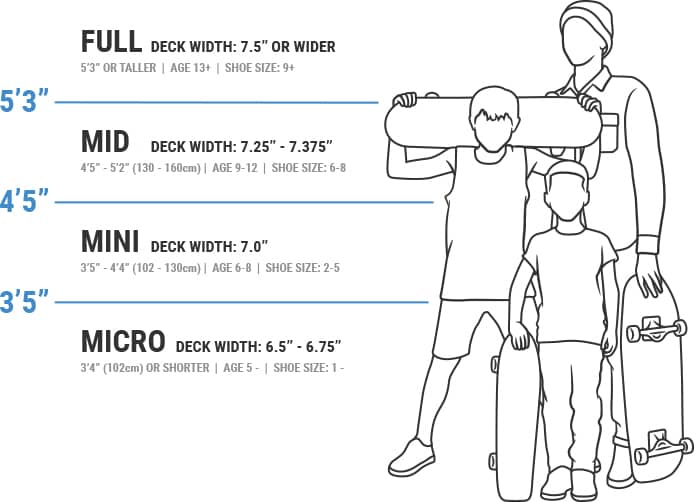
Keep Learning
Still Have Questions?
If you're still curious about the different types of skateboard decks, rest assured that we have the resources to help you out. Our customer service team is highly knowledgeable and can answer any questions you may have about these shoes or other skateboard equipment. You can easily reach out to them by phone or message.
Additionally, if you are in Portland, Eugene, Seattle or Bend, feel free to visit one of our local shops and speak to one of our friendly and helpful retail employees. They'll be more than happy to assist you and provide any information or guidance you need. Don't hesitate to reach out to us - we're here to help!
Customer Service:
Call us toll-free at 888.450.5060
Text us at: 888.450.5060
Monday - Friday, 8 a.m. - 6 p.m. Pacific Time
Saturday - Sunday, 9 a.m. - 5 p.m. Pacific Time
